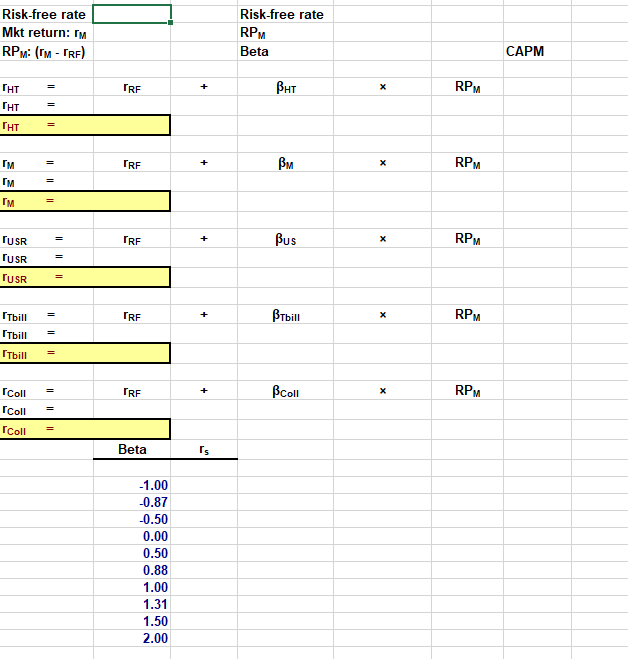Question
Suppose you created a 2-stock portfolio by investing $50,000 in High Tech and $50,000 in Collections. (1) Calculate the expected return, the standard deviation, the
Suppose you created a 2-stock portfolio by investing $50,000 in High Tech and $50,000 in Collections. (1) Calculate the expected return, the standard deviation, the coefficient of variation, and the Sharpe ratio for this portfolio, and fill in the appropriate blanks in the table.

Using data from number 1: The yield curve is currently flat; that is, long-term Treasury bonds also have a 3.0% yield. Consequently, Merrill Finch assumes that the risk-free rate is 3.0%. (2) Write out the SML equation, use it to calculate the required rate of return on each alternative.
 Suppose you created a 2 -stock portfolio by investing $50,000 in High Tech and $50,000 in Collections. (1) Calculate the expected return, the standard deviation, the coefficient of variation, and the Sharpe ratio for this portfolio, and fill in the appropriate blanks in the table. Suppose you created a 2 -stock portfolio by investing $50,000 in High Tech and $50,000 in Collections. (1) Calculate the expected return, the standard deviation, the coefficient of variation, and the Sharpe ratio for this portfolio, and fill in the appropriate blanks in the table
Suppose you created a 2 -stock portfolio by investing $50,000 in High Tech and $50,000 in Collections. (1) Calculate the expected return, the standard deviation, the coefficient of variation, and the Sharpe ratio for this portfolio, and fill in the appropriate blanks in the table. Suppose you created a 2 -stock portfolio by investing $50,000 in High Tech and $50,000 in Collections. (1) Calculate the expected return, the standard deviation, the coefficient of variation, and the Sharpe ratio for this portfolio, and fill in the appropriate blanks in the table Step by Step Solution
There are 3 Steps involved in it
Step: 1

Get Instant Access to Expert-Tailored Solutions
See step-by-step solutions with expert insights and AI powered tools for academic success
Step: 2

Step: 3

Ace Your Homework with AI
Get the answers you need in no time with our AI-driven, step-by-step assistance
Get Started


